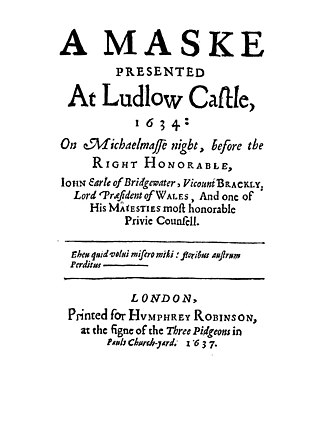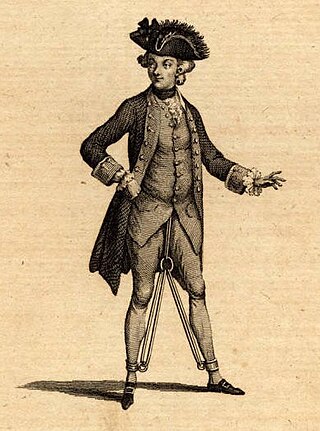
The masque was a form of festive courtly entertainment that flourished in 16th- and early 17th-century Europe, though it was developed earlier in Italy, in forms including the intermedio. A masque involved music, dancing, singing and acting, within an elaborate stage design, in which the architectural framing and costumes might be designed by a renowned architect, to present a deferential allegory flattering to the patron. Professional actors and musicians were hired for the speaking and singing parts. Masquers who did not speak or sing were often courtiers: the English queen Anne of Denmark frequently danced with her ladies in masques between 1603 and 1611, and Henry VIII and Charles I of England performed in the masques at their courts. In the tradition of masque, Louis XIV of France danced in ballets at Versailles with music by Jean-Baptiste Lully.

Henry Lawes was the leading English songwriter of the mid-17th century. He was elder brother of fellow composer William Lawes.

Susannah Maria Cibber was a celebrated English singer and actress. She was the sister of the composer Thomas Arne. Although she began her career as a soprano, her voice lowered in the early part of her career to that of a true contralto. She was universally admired for her ability to move her audiences emotionally both as an actress and vocalist. Possessing a sweet, expressive, and agile singing voice with a wide vocal range, Cibber was an immensely popular singer, even if at times her voice was criticized for a lack of polished technique. Charles Burney wrote of her singing that "by a natural pathos, and perfect conception of the words, she often penetrated the heart, when others, with infinitely greater voice and skill, could only reach the ear." Cibber was particularly admired by Handel, who wrote numerous parts especially for her including the contralto arias in his 1741 oratorio Messiah, the role of Micah in Samson, the role of Lichas in Hercules and the role of David in Saul among others. In the mid-1730s she began appearing in plays in addition to appearing in operas and oratorios. She became the greatest dramatic actress of the eighteenth-century London stage and at the time of her death was the highest-paid actress in England.
This article contains information about the literary events and publications of 1634.

In Greek mythology, Comus is the god of festivity, revels and nocturnal dalliances. Son and cup-bearer of the god Dionysus, he was represented as a winged youth or a child-like satyr. His mythology occurs only in later antiquity. During his festivals in Ancient Greece, men and women exchanged clothes. He was depicted as a young man on the point of unconsciousness from drink, with a wreath of flowers on his head.
In Greek mythology, Comus or Komus is the god of festivity, revels, and nocturnal dalliances.

King Arthur, or The British Worthy, is a semi-opera in five acts with music by Henry Purcell and a libretto by John Dryden. It was first performed at the Queen's Theatre, Dorset Garden, London, in late May or early June 1691.

Comus is a masque in honour of chastity written by John Milton. It was first presented on Michaelmas 1634 before John Egerton, 1st Earl of Bridgewater at Ludlow Castle in celebration of the Earl's new post as Lord President of Wales.

The Masque of Blackness was an early Jacobean era masque, first performed at the Stuart Court in the Banqueting Hall of Whitehall Palace on Twelfth Night, 6 January 1605. It was written by Ben Jonson at the request of Anne of Denmark, the queen consort of King James I, who wished the masquers to be disguised as Africans. Anne was one of the performers in the masque along with her court ladies, all of whom appeared in blackface makeup. In a ceremony earlier on the day, Prince Charles, Anne's second son was given the title of Duke of York.

Catherine Clive Catherine ‘Kitty’ Clive was a first songster and star comedienne of British playhouse entertainment. Clive led and created new forms of English musical theatre. She was celebrated both in high-style parts – singing, for instance, Handel’s music for her in Messiah, Samson, and The Way of the World – and in low-style ballad opera roles. Her likeness was printed and traded in unprecedented volume. She championed women’s rights throughout her career.

In ancient Greek religion and mythology, Euphrosyne is a goddess, one of the three Charites, known in ancient Rome as the Gratiae (Graces). She was sometimes called Euthymia or Eutychia.

Hafren is a legendary British princess who was drowned in the River Severn by her repudiated stepmother Gwendolen. The legend appears in Geoffrey of Monmouth's pseudohistorical chronicle Historia Regum Britanniae. According to Geoffrey, Hafren is the eponym of the Severn, which bears one of Britain's most ancient river names.
The Masque of Augurs was a Jacobean era masque, written by Ben Jonson and designed by Inigo Jones. It was performed, most likely, on Twelfth Night, 6 January 1622.
Tempe Restored was a Caroline era masque, written by Aurelian Townshend and designed by Inigo Jones, and performed at Whitehall Palace on Shrove Tuesday, 14 February 1632. It was significant as an early instance in which a woman appeared in a speaking role in a public stage performance in England.
Arcades is a masque written by John Milton and performed on 4 May 1634. The piece was written to celebrate the character of Alice Spencer, the Countess Dowager of Derby, widow of Ferdinando Stanley, 5th Earl of Derby, during her 75th birthday. The masque distinguishes Spencer as having a greater far superior to other noble women by titling Spencer as queen of a metaphorical Arcadia that is far superior to any other realm. The piece served as a basis for Milton's later masque, Comus.
Cecilia Young was one of the greatest English sopranos of the eighteenth century, the wife of composer Thomas Arne, and the mother of composer Michael Arne. According to the music historian Charles Burney, she had "a good natural voice and a fine shake [and] had been so well taught, that her style of singing was infinitely superior to that of any other English woman of her time". She was part of a well-known English family of musicians that included several professional singers and organists. Young enjoyed a large amount of success through her close association with George Frideric Handel. She appeared in several of his oratorios and operas including the premieres of Ariodante (1735), Alcina (1735), Alexander's Feast (1736) and Saul (1739).
The masque Comus, or There in the Blissful Shades is a short version of John Milton's Comus, based on a libretto earlier made by John Dalton for composer Thomas Arne's own Comus. The sixty-year-old Handel composed the setting in 1745 for the pleasure of other guests during his summer recuperation at the country seat of the Earl of Gainsborough. Some of the music was later recycled by Handel, for example as the tenor aria Then will I Jehovah's praise from the Occasional Oratorio.
John Dalton (1709–1763) was an English cleric and poet. He is now remembered as a librettist.

Margaret Kennedy was a contralto singer and actress. She was best known for her performances in male roles, especially in the operas of Thomas Arne.

Alice Vaughan, Countess of Carbery was an English musician and performer who acted in two notable masques: Aurelian Townshend's Tempe Restored (1632), and John Milton's Maske Performed at Ludlow Castle (1634).












